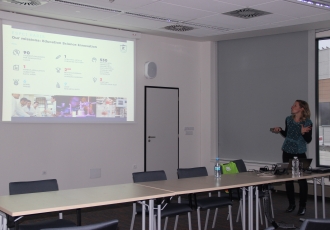- Speaker: Prof. Alba Marcellan
- Institution: Maître de conférences de l’Université Pierre et Marie Curie, École Supérieure de Physique et de Chimie Industrielles (ESPCI),
Paris - Date: 24.11. 2017
- Place: CEITEC Brno University of Technology
Anotation:
Based on gel's remarkable features of absorption, storage or release of water (or solvent), gels
have become essential in engineering applications like superabsorbent, soilless agriculture or
tissue engineering and regeneration. Gels could also be key players for the design of flexible
actuators, valves or sensors. However, their generally weak mechanical performances combined
with the inherent difficulties of manufacturing and assembling them still limit applications. By
using concepts of polymer physics, here we present some recent strategies1-2 we have explored
to design tough “hybrid” networks that combine covalent (permanent) cross-links and physical
(reversible) interactions. Thus, polymer adsorption onto silica nanoparticles can be a remarkably
simple and efficient means for the mechanical toughening (in bulk or adhesion) of gels. More
recently, by exploring the coil-to-globule transition, we have designed thermo-responsive phaseseparated
hydrogels which combine a conventional network with thermo-responsive domains
which act as reinforcing fillers operating at a targeted temperature: purely organic responsive
nanocomposite gels.
1 "Nanoparticle solutions as adhesives for gels and biological tissues" ; Rose, S; Prevoteau, A;
Elziere, P; Hourdet, D ; Marcellan, A ; Leibler, L. / Nature (2014)
2 "Thermoresponsive Toughening with Crack Bifurcation in Phase-Separated Hydrogels under
Isochoric Conditions" ; Guo, H ; Sanson, N ; Hourdet, D ; Marcellan, A / Advanced Materials (2016)


 Share
Share


